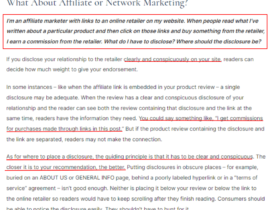Amazon Direct Ship, a method for sellers to ship products to customers bypassing Amazon’s warehouses, has gained traction in recent years. This approach offers unique benefits and challenges for sellers, and learning how to navigate this business model can lead to successful online ventures. In this article, we will dive into the world of Amazon Direct Ship, exploring its advantages, disadvantages, and how it compares to alternatives such as Fulfillment by Amazon (FBA).
For those new to the e-commerce landscape, understanding the intricacies of Amazon Direct Ship is crucial for properly managing inventory, logistics, and marketing strategies. By carefully selecting products, developing efficient order fulfillment processes, and implementing various marketing techniques, sellers can build a thriving Amazon Direct Ship business. Apart from managing various aspects of the business, it is also important for sellers to be mindful of potential scams, legal issues, and methods to maximize profits and scale their Amazon Direct Ship operations.
Key Takeaways
- Amazon Direct Ship enables sellers to bypass Amazon’s warehouses, offering unique benefits and challenges.
- Proper management of inventory, logistics, and marketing is crucial for a successful Amazon Direct Ship business.
- Awareness of potential scams, legal issues, and strategies for growth is important for maximizing profits and scaling operations.
Understanding Amazon Direct Ship
Amazon Direct Ship is a shipping method where the seller sends products directly from their warehouse to the customers. This method allows sellers to manage their inventory more efficiently and provide faster shipping for their customers.
When using Amazon Direct Ship, the seller is responsible for packaging and shipping the products. This is different from the Fulfillment by Amazon (FBA) program, where Amazon takes care of these tasks. Sellers benefit from direct shipping as they have more control over their inventory and can potentially save on storage fees.
Warehouses play a crucial role in the direct ship process, as they are the primary source of inventory storage and order fulfillment. The efficiency and organization of a warehouse can greatly impact the success of an Amazon Direct Ship operation. Proper inventory management and order picking practices are essential for timely and accurate order shipments.
Customers also benefit from the Amazon Direct Ship method, as it often results in faster delivery times due to a more direct route from the seller’s warehouse to the customer’s address. However, customers should keep in mind that, unlike FBA orders, Amazon is not handling packaging and shipping for direct ship orders. This means that customer service inquiries related to those aspects of an order should be directed to the seller, rather than Amazon.
In summary, Amazon Direct Ship is a shipping option that enables sellers to maintain greater control over their inventory and provide quicker shipping at the same time. By understanding the roles of sellers, warehouses, and customers involved in this process, the benefits and challenges of the direct ship approach become clearer.
Pros and Cons of Amazon Direct Ship
Benefits
Amazon Direct Ship offers advantages for both sellers and customers. For sellers, this service can expand their reach to a wider customer base, as it allows them to sell products directly to Amazon customers without having to store them at Amazon Fulfillment Centers. This can save sellers money and make their business more cost-effective.
For customers, one of the primary benefits of Amazon Direct Ship is the potential for free shipping on eligible orders. This can make it even more appealing for customers to purchase through Amazon, knowing that they may not have to pay extra for shipping costs.
Here are some key benefits for sellers and customers:
| Seller Benefits | Customer Benefits | |
|---|---|---|
| Reach | – Access to Amazon’s vast customer base | – Exposure to new and unique products |
| Cost-effective | – No need to store products at Amazon Fulfillment Centers | – Competitive pricing due to reduced overhead costs |
| Free Shipping | – Attract more customers with free shipping offers | – Save on shipping costs for eligible orders |
Drawbacks
Despite the many advantages, Amazon Direct Ship also has some potential drawbacks. For sellers, one significant issue is the increased responsibility for managing shipping and handling processes, which can be time-consuming and logistically challenging.
For customers, there may be inconsistency in shipping times and delivery speed, as products are being shipped directly from the seller rather than from an Amazon Fulfillment Center. This can lead to some customers experiencing slower than expected delivery times for their orders.
Here are some notable drawbacks for sellers and customers:
| Seller Challenges | Customer Challenges | |
|---|---|---|
| Shipping | – Increased responsibility for managing shipping processes | – Inconsistency in shipping times and delivery speed |
| Logistics | – Need to handle returns and customer service | – Potential for slower resolution of issues and returns |
Amazon Direct Ship vs Fulfillment by Amazon (FBA)
Amazon Direct Ship
Amazon Direct Ship (ADS) is a shipping method where sellers store their inventory and handle the shipping process themselves. When a customer places an order, the seller is responsible for the timely fulfillment and delivery of the product.
Some advantages of using Amazon Direct Ship include:
- Lower fees: Sellers using ADS often have lower fees compared to FBA, as they handle the fulfillment process themselves and don’t pay storage or fulfillment fees to Amazon.
- Inventory control: ADS allows sellers to have direct control over their inventory, making it easier for them to manage stock levels, product storage, and quality control.
However, there are also some disadvantages of using ADS:
- Limited reach: Since Amazon Prime eligibility is exclusive to FBA, ADS may have a limited reach when compared to FBA, especially among Prime members.
- More responsibilities: Handling order fulfillment and shipping requires additional time and effort from the seller, which may impact the customer experience and lead to negative reviews.
Fulfillment by Amazon
Fulfillment by Amazon (FBA) is a service provided by Amazon where sellers store their products in Amazon’s warehouses, and Amazon handles the storage, packing, and shipping of products.
Some advantages of using FBA include:
- Wider reach: FBA products are eligible for Amazon Prime, which means FBA can provide greater visibility and attract more customers, particularly among Prime members.
- Less hassle: Amazon handles all aspects of fulfillment, including storage, packaging, and shipping, making it convenient and less time-consuming for sellers.
On the other hand, there are some disadvantages of using FBA:
- Higher fees: FBA usually requires higher fees compared to ADS, as sellers pay Amazon for storage and fulfillment services.
- Less inventory control: With FBA, sellers relinquish direct control over their inventory, which may lead to occasional inventory issues or delays in restocking.
In conclusion, the choice between Amazon Direct Ship and Fulfillment by Amazon depends on the priorities and capabilities of each seller. While ADS offers lower fees and more inventory control, FBA provides a wider reach and a more convenient fulfillment process.
Setting Up an Amazon Direct Ship Business
To set up an Amazon Direct Ship business, follow these steps:
- Create a Seller Central account: Start by signing up for an Amazon Seller Central account, which will grant you access to all the tools needed to manage your business effectively.
- Choose your products: Identify products that are in demand, profitable, and can be shipped directly from the supplier to the customers. Research the competition, pricing, and market trends to make informed decisions.
- Find a reliable supplier: Establish relationships with suppliers that offer high-quality products at competitive prices, can handle direct shipping, and possess excellent communication skills for seamless coordination.
- Amazon FBA vs. Direct Ship: While Amazon FBA (Fulfillment by Amazon) provides storage, packaging, and shipping services, Direct Ship involves shipping the products directly from the supplier to the customer. Direct Ship eliminates the need for storage fees and may result in faster shipping times, but it can also require more coordination with the supplier.
- List your products on Amazon: Create detailed and accurate product listings with optimized keywords, clear product images, and detailed descriptions. This will help your products rank higher in search results and attract more potential customers.
- Choose a shipping method: Discuss the available shipping options with your supplier to ensure prompt and reliable delivery to your customers. This includes selecting a shipping provider, determining shipping costs, and setting shipping times.
- Monitor your inventory: Keep track of your inventory levels and communicate with your supplier regularly to prevent stockouts, overstocking, or delays in shipments.
- Handle customer service: Manage any customer inquiries, returns, or issues promptly and professionally to maintain a positive reputation and customer satisfaction.
By following these steps and maintaining clear communication with your supplier, you can successfully set up and manage an Amazon Direct Ship business. Remember to continuously analyze and optimize your product listings and business strategies to stay ahead in a competitive market.
Managing Inventory and Logistics
Managing inventory and logistics is a vital aspect of Amazon’s Direct Ship program. A well-organized inventory system can save time, money, and prevent issues that may arise from improper storage or handling.
Inventory Management: To make the most out of your Amazon Direct Ship business, effective inventory management is crucial. This involves monitoring stock levels, keeping track of orders, and consistently updating inventory records. Storage fees may apply, so it’s essential to maintain accurate inventory levels in order to avoid additional costs.
Logistics: Efficient logistics planning is necessary to ensure a smooth flow of products from your warehouse to Amazon’s fulfillment centers. Proper planning and organization of shipments can help you save on shipping costs and minimize potential delays.
Amazon Warehouse and Inventory Storage: Storing your inventory in Amazon’s warehouses presents several advantages, as it allows for faster shipping times and enhanced customer satisfaction. However, storage fees can add up over time, so it’s essential to consider the costs associated with long-term storage. Amazon Global Logistics can help streamline international shipping and import processes, making it easier for sellers to expand their customer base.
FBA Inventory Management: As part of the Fulfillment by Amazon (FBA) program, Amazon offers various tools and features to help sellers with inventory management. These tools can assist in tracking stock levels, forecasting future demand, and preventing unnecessary storage fees. Being proactive in managing your inventory through the FBA program can increase profitability and product availability.
Long-Term Storage Fee: To encourage sellers to maintain a high inventory turnover, Amazon imposes long-term storage fees on items stored in their warehouses for extended periods. These fees are charged in addition to regular storage fees, so it’s crucial to manage inventory efficiently to minimize these costs. Prioritize selling items with a high likelihood of incurring long-term storage fees and review your inventory regularly to prevent unnecessary charges.
Remember, effectively managing inventory and logistics can lead to a successful Amazon Direct Ship business. By implementing strategies to optimize these processes, you can save money, reduce storage fees, and ultimately, maximize profits.
Product Sourcing and Selection
When it comes to Amazon Direct Ship, product sourcing and selection are crucial components for success. Here we discuss how to identify the right products, as well as finding reliable suppliers and manufacturers to source high-quality products at competitive prices.
The first step in product sourcing is finding suitable products to sell. You should consider factors such as product demand, profit margins, competition, and ease of shipping. To gauge demand, research Amazon’s bestsellers and trending items, paying attention to seasonal fluctuations. Choose products with high-profit margins to maximize revenue and factor in factors like shipping fees, taxes, and potential returns.
To source products, you can explore different options, such as wholesale suppliers and manufacturers. Contacting these suppliers can help you establish relationships with them, allowing you to negotiate better prices and terms.
Some tips on finding suppliers and manufacturers:
- Attend trade shows and network with industry professionals
- Use online supplier directories, such as Alibaba or Thomasnet
- Join industry forums or online communities to find recommendations
- Look for suppliers and manufacturers with positive reviews and a history of delivering quality products
Keep in mind that it’s essential to research potential suppliers and manufacturers thoroughly before committing to any partnerships. This includes verifying their credentials, assessing factory conditions, and evaluating their capacity to produce the products you need.
When it comes to working with supplier partners, communication is key. Ensure that both parties have a clear understanding of the expectations, including product specs, shipping timelines, and payment terms. Establishing strong relationships will support long-term growth and contribute to overall business success in Amazon Direct Ship.
Order Fulfillment and Shipping
Amazon Direct Shipping focuses on streamlining the order fulfillment process. This service ensures quick and efficient shipping to provide a reliable customer experience.
Order fulfillment is a crucial aspect of Amazon Direct Shipping. The process begins when a customer places an order, followed by the packing and shipping of the ordered items. Efficient order fulfillment leads to customer satisfaction and loyalty, ultimately resulting in positive seller ratings and reviews on Amazon.
Shipping costs are an important factor to consider. Amazon Direct Shipping offers competitive rates for international and domestic shipping. It is essential to calculate shipping costs accurately to avoid overpaying or undercharging customers. Amazon’s shipping calculator tool can assist in determining an item’s actual shipping costs based on weight, dimensions, and destination.
Customer support plays a vital role in the success of Amazon Direct Shipping. Efficient customer service ensures that any shipping inquiries or concerns are addressed promptly and professionally. This not only enhances customer satisfaction but also builds trust with the brand.
Transportation is a critical element in Amazon Direct Shipping, ensuring that packages reach customers timely and securely. Amazon partners with various carriers to provide a range of shipping options depending on the customers’ preferences, such as standard or expedited shipping. Utilizing these options can help improve the overall shipping experience for both sellers and customers.
In summary, Amazon Direct Shipping focuses on optimizing order fulfillment, managing shipping costs, and providing exceptional customer support. By leveraging efficient transport systems, sellers can offer their customers a seamless online shopping experience.
Marketing Strategies for Amazon Direct Ship Sellers
In order to succeed as an Amazon Direct Ship seller, it is crucial to adopt effective marketing strategies that cater to your target customers. Below are a few methods worth considering:
Build a Strong Brand: A well-defined brand helps customers identify your products and trust your business. To create a strong brand presence, invest in attractive packaging, professional product images, and a memorable logo. Consistent branding also helps in building a positive reputation.
Optimize Product Listings: Utilizing relevant keywords, clear and concise descriptions, and high-resolution images can greatly enhance your product listings. Additionally, consider bullet points to highlight the key features of your products as they provide a quick and easy way for customers to understand the benefits.
Utilize Amazon Advertising: Amazon offers a variety of advertising options such as Sponsored Products and Sponsored Brands, which can help boost your product visibility and increase sales. These ads are typically displayed on search results pages and product detail pages, making it easier for customers to discover your products.
Engage in Social Media Marketing: Social media platforms like Facebook, Instagram, and Pinterest are ideal for promoting your Amazon Direct Ship products. Share high-quality content such as product images, informational articles, and positive customer reviews to increase brand awareness and drive traffic to your Amazon listings.
Offer Competitive Pricing: By regularly monitoring competitor pricing and offering deals, discounts, or bundles, you can attract price-conscious customers and boost your conversion rates.
Maintain Excellent Customer Service: Providing outstanding customer service can help retain existing customers and attract new ones. Promptly responding to customer inquiries and addressing any issues or concerns that arise demonstrates your commitment to customer satisfaction. Besides, positive reviews and ratings can also improve your Amazon seller ranking.
Implementing these marketing strategies will help you reach more potential customers and achieve success as an Amazon Direct Ship seller.
Avoiding Scams and Legal Issues
When participating in Amazon Direct Ship, it’s essential to be aware of potential scams and stay on the right side of the law. By taking the right precautions, you can protect yourself, your business, and your customers from fraudulent activities and legal problems.
To avoid scams and legal issues, consider the following measures:
- Verify suppliers: Ensure that you are working with a reputable supplier by checking online reviews, ratings, and business history. This can help prevent engaging in transactions with fraudulent suppliers.
- Understand customs regulations: Familiarize yourself with customs rules and regulations for the countries you ship to, as failure to comply with these requirements can lead to delays, fines, or legal issues.
- Stay up to date with Amazon policies: Regularly review and adhere to Amazon’s rules, guidelines, and policies, including the Amazon Services Business Solutions Agreement, the Amazon Direct Ship guide, and other relevant documents.
- Secure sensitive information: Use secure methods when transmitting sensitive data, such as banking information, to prevent scams and cybercriminal activities.
- Maintain accurate records: Keep accurate and detailed records of transactions, including invoices and payment receipts, to track your interactions with suppliers and customers. These records will be valuable in case any legal disputes arise.
By following these best practices, you can confidently conduct Amazon Direct Ship business activities and provide a reliable service to your customers while minimizing exposure to scams and legal issues.
Maximizing Profits and Scaling Amazon Direct Ship Business
To maximize profits in your Amazon Direct Ship business, it’s crucial to implement effective strategies and continuously monitor your progress. Here are some key points to consider when aiming for growth and higher revenue.
Firstly, optimize pricing for your products. Finding the sweet spot in pricing will attract more customers and result in higher sales. It’s essential to analyze competition, demand, and target customer preferences in order to make well-informed pricing decisions. Regularly evaluate and adjust your pricing strategy to remain competitive and better serve the ever-changing e-commerce market.
Secondly, expand your product offerings. While it’s essential to focus on your bestselling products, diversifying your inventory can attract a broader range of customers and generate more revenue streams. Keep your finger on the pulse of market trends, industry reports, and customer reviews to stay updated on popular products and cater to customer demands.
In addition, improve customer service and response times. Providing excellent customer support will not only increase customer satisfaction but also foster loyalty, leading to repeat purchases and positive word-of-mouth. Actively monitor your communication channels, respond to questions and concerns promptly, and utilize tools like AI chatbots to ensure a smooth customer experience.
Don’t forget the importance of efficient operations management. Streamlining your supply chain, warehousing, and shipping processes will cut costs, reduce errors, and speed up order fulfillment. Utilize inventory management software to track stock levels, automate shipping label printing, and create a seamless e-commerce workflow.
Here are some other tactics to keep in mind:
- Utilize data analytics to drive decision-making and uncover valuable insights.
- Optimize your product listings with persuasive descriptions, images, and keywords.
- Invest in marketing efforts to attract and retain customers.
- Monitor competitors to learn from their successes and avoid their mistakes.
By consistently focusing on these key areas and maintaining a clear, knowledgeable, and confident approach, you’ll set your Amazon Direct Ship business on the path to long-term growth and higher revenues.
Frequently Asked Questions
How does direct shipping support Amazon’s business model?
Direct shipping enables Amazon to reduce overall warehouse space and inventory costs while maintaining a vast selection of products for its customers. By partnering with various sellers and manufacturers, Amazon directly connects buyers and sellers, thus improving efficiency in the supply chain.
What is the process of direct shipping?
In direct shipping, products are shipped directly from the manufacturer or seller to the customer, bypassing Amazon’s fulfillment centers. When a customer places an order, Amazon sends the order details to the respective seller or manufacturer, who then fulfills the order and ships the product to the customer.
What is Amazon Sample Box?
Amazon Sample Box is a program that offers customers the opportunity to try out a collection of products before making a full-size purchase. Amazon offers a range of themed sample boxes, such as beauty, snacks, and pet supplies, for a small fee. After trying out the samples, customers receive a promotional credit equal to the cost of the sample box, which they can use toward the purchase of a full-size item from the box.
How does Product Sampling work on Amazon?
Product Sampling is a program where Amazon collaborates with sellers to send free product samples to a select group of customers. These customers are chosen based on their purchase history and preferences. The goal of the program is to help customers discover new products while providing sellers with valuable feedback and potential sales.
How to get free samples for review on Amazon?
To increase your chances of receiving free product samples for review on Amazon, you can:
- Create a detailed and informative Amazon profile, including your interests and product preferences.
- Write thorough and helpful reviews for products you have purchased.
- Join Amazon’s Vine program, which invites top reviewers to try out and review new products.
What are some ways to receive free stuff with free shipping on Amazon?
There are several ways to find and receive free items or free shipping on Amazon:
- Sign up for an Amazon Prime membership, which offers free two-day shipping on millions of items.
- Look for products labeled as “Eligible for Free Shipping” or “Ships for Free.”
- Participate in Amazon giveaway contests hosted by sellers for a chance to win free products.













